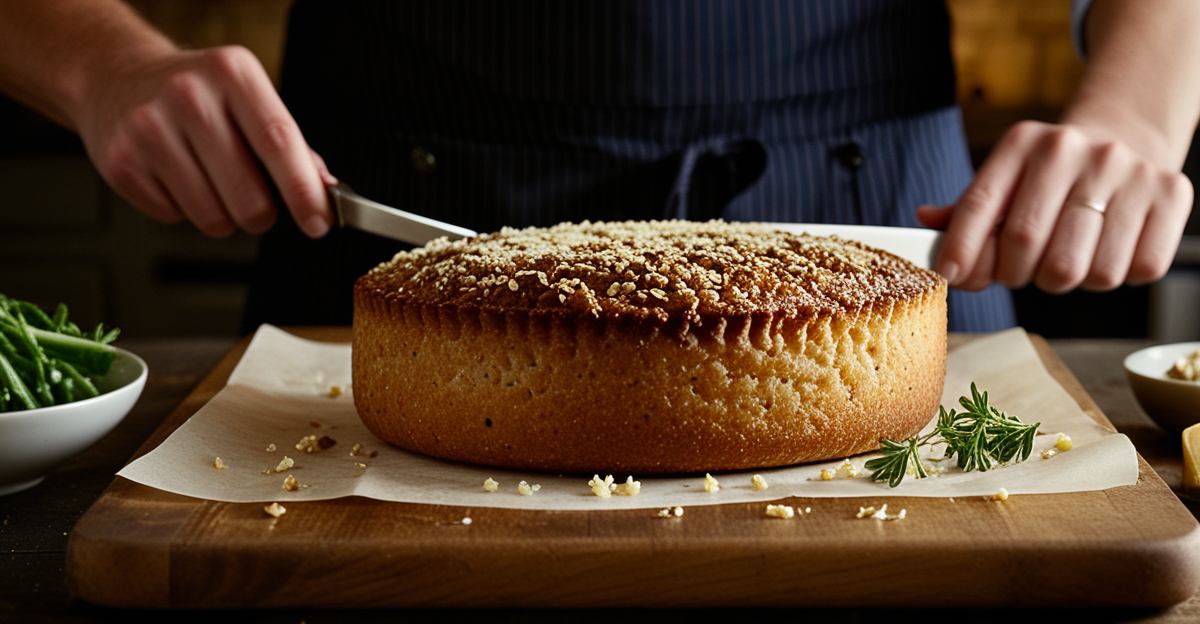Enduring Legacy of Traditional British Recipes
Traditional British recipes have solidified their place as cornerstones of British food history and continue to shape the nation’s heritage cuisine. These dishes, such as shepherd’s pie, roast beef, and afternoon tea, offer more than nourishment; they carry cultural weight and evoke nostalgia. Rooted in regional distinctions, these recipes reflect local ingredients and historical contexts, underscoring the diversity within British culinary identity.
The cultural significance of these dishes goes beyond the plate. For many, traditional British recipes symbolize family gatherings, celebrations, and continuity with the past. For example, afternoon tea remains a timeless ritual, celebrating community and leisure. Similarly, roast beef connects to classic Sunday lunches, reinforcing social bonds.
Additional reading : What are the traditional methods for making a savory Welsh rarebit?
In contemporary settings, traditional British recipes endure not only through home cooking but also via restaurants and heritage food movements. Their ongoing popularity testifies to a collective appreciation of British culinary history, where heritage cuisine serves as a bridge between generations, preserving flavors and techniques that define the national palate. Embracing these recipes allows for a meaningful connection to Britain’s rich gastronomic past.
Enduring Legacy of Traditional British Recipes
Traditional British recipes form the backbone of the nation’s heritage cuisine, preserving a culinary identity shaped by both regional diversity and historical depth. Classic dishes like shepherd’s pie, roast beef, and the ritual of afternoon tea are not just meals; they embody British food history and cultural continuity. These iconic recipes highlight the importance of locally sourced ingredients and time-honoured cooking methods that have been passed down through generations.
Also to see : What Are the Unique Characteristics of Traditional UK Cuisine?
The influence of distinct regions, from Yorkshire puddings in the north to Cornish pasties in the south, has contributed to a rich and varied tapestry of flavours. This diversity informs the national palate and is an essential part of Britain’s culinary heritage. Beyond taste, the cultural significance of these recipes evokes nostalgia and fosters a sense of belonging, often linked to family traditions and community events.
In contemporary settings, these traditional dishes continue to resonate, not merely as historical artifacts, but as vibrant and adaptable elements of British cuisine. Their enduring popularity reflects an appreciation for authentic tastes while providing a foundation upon which new culinary trends are built, ensuring that traditional British recipes remain relevant and cherished.
Adaptation of Classic Techniques in Modern Kitchens
Traditional British recipes rely heavily on British culinary techniques such as roasting, stewing, and pastry-making, which remain foundational in contemporary kitchens. Roasting, long valued for its ability to develop deep, rich flavours in meats like beef or lamb, continues to anchor many updated recipes. Stewing offers a method to tenderize tougher cuts while infusing them with complex flavours, a technique still favored in modern takes on classics like shepherd’s pie.
Incorporating traditional ingredients remains key to maintaining the integrity of heritage cuisine while allowing innovation. Root vegetables, suet, and quality meats are often reimagined in contemporary dishes that honor their origins but present with fresh twists. This balance between preservation and creativity reflects a continuity of tradition meeting innovation.
Renowned chefs today actively revive and refine these time-honoured methods, showcasing how cooking techniques from British culinary history enrich modern gastronomy. Their work highlights the potential of classic methods to adapt without losing essence, demonstrating that tradition and innovation coexist to evolve British food culture while respecting its roots.
Adaptation of Classic Techniques in Modern Kitchens
Classic British culinary techniques like roasting, stewing, and pastry-making remain foundational in many contemporary kitchens. These traditional methods continue to underpin modern recipes, showing how tradition meets innovation in cooking. For instance, roasting—a method central to dishes like roast beef—is now often paired with new seasoning blends or cooking technologies that enhance flavour and texture while respecting British food history.
Contemporary chefs frequently incorporate traditional ingredients such as root vegetables, game meats, and local herbs into innovative dishes. This approach highlights the adaptability of traditional British recipes while preserving their heritage essence. For example, stewing, which was originally a slow-cooking technique for tougher cuts, now sees use in modern, quicker preparations that retain the depth of flavour central to heritage cuisine.
Pastry-making techniques have also evolved; classic Cornish pasties or pies maintain their characteristic flakiness but are sometimes filled with novel or fusion ingredients. This revival and reinterpretation of British cooking techniques enable chefs to pay homage to culinary tradition while captivating today’s diners with creativity and freshness.
Influential Chefs and Cookbooks Shaping Current Trends
Prominent British chefs play a pivotal role in reimagining traditional British recipes, blending authentic flavours with modern techniques. Chefs such as those leading London’s vibrant restaurant scene challenge conventional approaches, revitalizing dishes like shepherd’s pie and roast beef by introducing innovative textures and presentation styles. Their creativity ensures that heritage cuisine remains dynamic and relevant.
Historical and contemporary cookbooks contribute significantly to this evolution. Classic volumes preserve the foundations of British food history, while recent publications reflect current tastes and dietary trends. These cookbooks guide both professional kitchens and home cooks, bridging past and present culinary practices.
Restaurant menus frequently illustrate this fusion, showcasing dishes that honor heritage cuisine while appealing to contemporary palates. By combining time-honoured recipes with fresh ingredients and techniques, British chefs deliver experiences that resonate broadly. This synergy highlights how chefs and cookbooks together shape the trajectory of modern British cuisine, encouraging continuous reinterpretation of traditional fare without sacrificing cultural significance.
Influential Chefs and Cookbooks Shaping Current Trends
British chefs play a vital role in redefining modern British cuisine by skillfully reinterpreting traditional British recipes. Their creative approaches often involve integrating classic flavours with contemporary culinary ideas, keeping heritage cuisine dynamic and appealing to today’s diners. Chefs like those leading prominent kitchens emphasize respecting the roots of British food history while introducing subtle innovations that refresh dishes such as shepherd’s pie or roast beef.
The impact of cookbook influence on the evolution of British recipes cannot be overstated. Historical cookbooks document the origins of many iconic dishes, providing a basis for adaptation. Meanwhile, modern collections by celebrated chefs serve as guides for both professional kitchens and home cooks, blending time-honoured traditions with innovative techniques and ingredients. This dual influence ensures that Britain’s rich culinary heritage remains relevant.
Restaurant menus increasingly showcase this blend, offering dishes that honour heritage cuisine but present in modern styles. As a result, contemporary British dining experiences balance nostalgia with novelty, reflecting both deep respect for the past and enthusiasm for fresh culinary trends.
Comparison Between Traditional and Contemporary British Dishes
Traditional British recipes laid the groundwork for many staples in today’s modern British cooking, yet notable evolution in flavour profiles and presentation distinguishes contemporary dishes. Classic ingredients like beef, root vegetables, and suet remain central, showcasing continuity in foundational elements. However, chefs increasingly adapt these components, experimenting with seasoning and cooking methods, thus modifying traditional flavor notes while respecting heritage.
Presentation and dining expectations have shifted dramatically. Where traditional British cuisine emphasized hearty, generous servings often served family-style, contemporary approaches focus on refined plating and balanced portions, aligning with global dining trends. This evolution reflects changing consumer preferences for lighter, visually appealing meals without sacrificing authenticity.
Moreover, classic recipes inspire popular 21st-century dishes by providing a historical base that chefs creatively reinterpret. Examples include reimagined shepherd’s pie with gourmet ingredients or deconstructed afternoon tea served in novel formats. These adaptations highlight a dialogue between past and present, where recipe evolution maintains cultural roots but thrives in modern culinary contexts. The blend of tradition and innovation ensures that heritage cuisine continues to captivate diverse palates.
Comparison Between Traditional and Contemporary British Dishes
Traditional British recipes and modern British cooking share foundational elements, yet notable shifts in flavour profiles and presentation reflect evolving tastes. Core ingredients like lamb, root vegetables, and suet remain prevalent, preserving links to British food history and heritage cuisine. However, contemporary dishes often incorporate global spices and lighter cooking methods, signaling a move toward more diverse and health-conscious flavours.
The evolution of recipes highlights how tradition meets innovation without losing essence. For instance, a classic shepherd’s pie might now feature a cauliflower mash topping instead of potato, subtly altering texture and nutritional value. Simultaneously, modern plating techniques elevate humble dishes, meeting current dining expectations for visual appeal and refinement.
While the nostalgic qualities of traditional dishes remain cherished, present-day chefs often reinterpret recipes to suit contemporary lifestyles and palates. This blending enriches British cuisine by honouring heritage cuisine while embracing creativity. As a result, classic recipes act as both inspiration and framework for popular 21st-century meals, illustrating how the culinary landscape evolves while maintaining respect for its roots.





